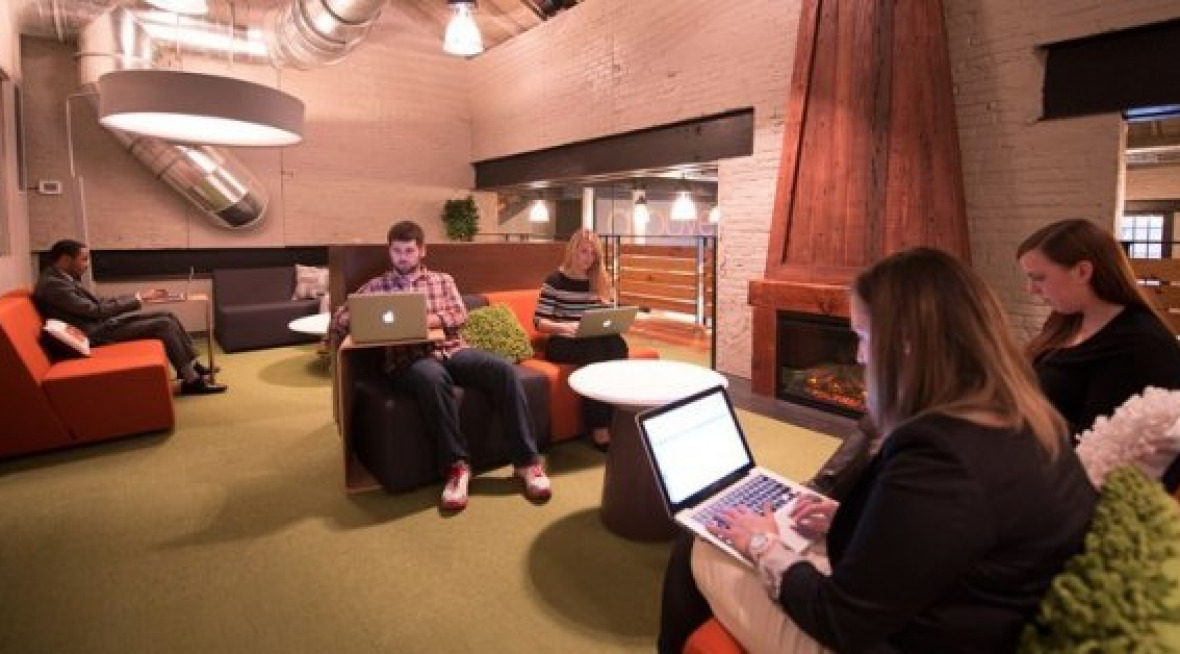We use cookies to maximize your online experience with us. By closing this window, you consent to our cookie policy. You can change your cookie settings in your browser any time. For more information, please see our Privacy Policy located on the footer of this site.
Companies Are Rethinking The Open Office, And It’s About Time

In 2012, when Ethan Giffin was designing a new office for his Baltimore startup, he wanted an open floor plan that would encourage communication among his employees. But he also wanted to build quiet places where people could work without distractions.
“People have different needs throughout their day — times they want to collaborate and times where they just need to think by themselves,” said Giffin, 40, who is CEO of Groove, a marketing company.
So when Giffin built Groove’s new office the following year, he included a library — complete with bookshelves, couches, plants, a fireplace and an unspoken “no-talking” rule — as well as some smaller, more private workspaces.
Although a majority of American workers go to offices with open floor plans (70 percent of us, according to the International Facilities Management Association), companies are beginning to acknowledge that this set-up isn’t always the best for getting work done. Without walls, there can be a lot of interruptions and distractions, making even the most diligent employee less productive. As a result, some U.S. companies are diversifying their workspaces to include secluded areas where employees can work undisturbed.
“The pendulum has swung too far,” said Christine Congdon of Steelcase, a Michigan-based company that designs corporate interiors. “People have to have places to rejuvenate and absorb and process information” in order to be productive at work, she said.
There are no statistics yet for how many U.S. companies are adding private workspaces to their offices, but it’s a growing trend, according to Sonya Dufner, a director of workplace strategy at the design firm Gensler. “Every new space we’re designing has these kinds of areas,” she said.
to read entire article click here!
